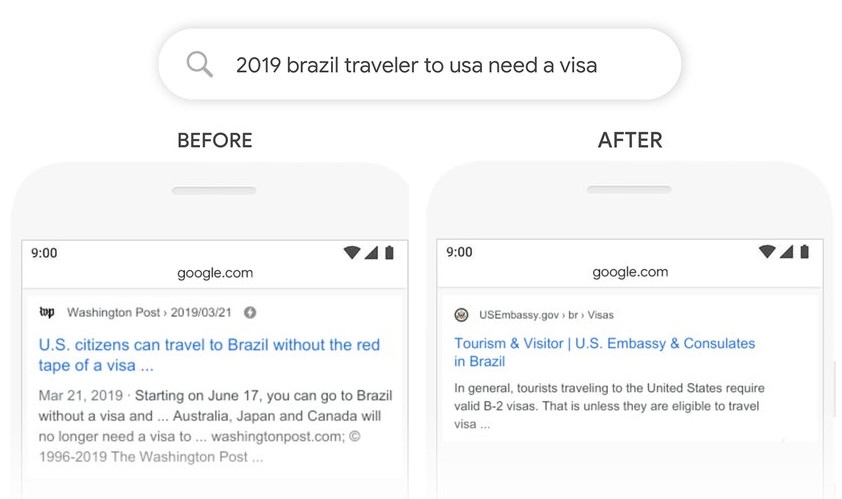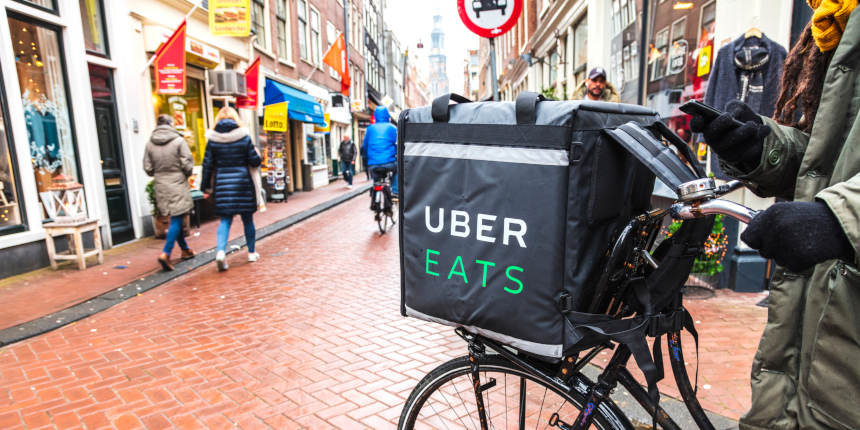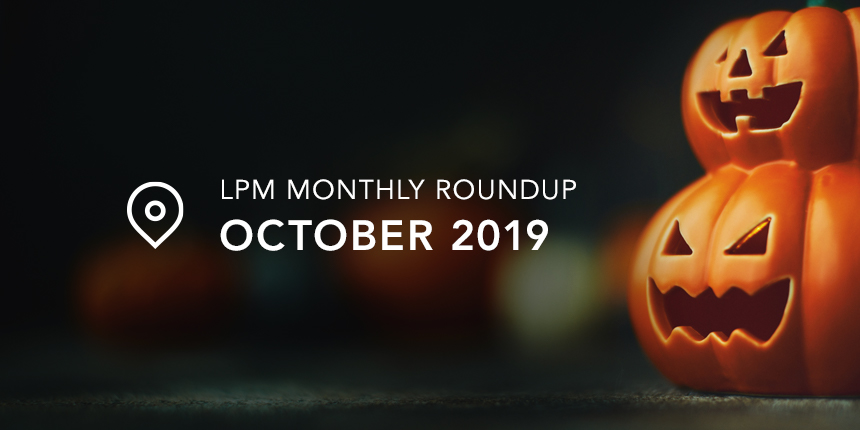In a timely ode to Halloween, October’s Local Presence Management (LPM) roundup is filled with both tricks and treats. The ubiquitous search giant was as busy as ever this month, stirring its cauldron to conjure up numerous noteworthy updates. So, without further ado, let’s dive into the most recent local search developments every marketer should know.
Why did Google My Business metrics suddenly spike?
Last month, many businesses experienced a sudden spike in Google My Business (GMB) views and searches. In fact, we saw a massive boost across many unrelated businesses and industries—suggesting that something rather fundamental has changed at Google.
A single business may not notice the change, but we’ve been able to assess this strange and spooky trend as it impacts reporting across many of our clients. Full details are available in our findings, but rest assured that this is most likely a change in how Google reports data and not an actual increase in search traffic: after all, clicks, calls, and directions don’t seem to be impacted.
Meet BERT, Google’s latest AI endeavor
Google’s Bidirectional Encoder Representations from Transformers (or BERT, for short) is a deep learning algorithm aimed at better understanding natural language queries. It’s not intended to replace RankBrain, released in 2015, but rather work in tandem to better populate Google’s search engine results pages.
With the rise of voice search, users are increasingly conducting searches in complete sentences—even on desktop and mobile—so BERT represents Google’s latest effort to optimize for natural language queries rather than keywords. For example, the search phrase “how to catch a cow fishing?” would ordinarily generate search results based around “cow”, as in the mammal. But BERT considers the context of the whole sentence. In this case, it would deduce that the cow in question is actually a type of striped bass—because of the presence of the verb “fishing”.

Image courtesy of Google
BERT is reported by Google to be affecting about 10% of queries. This number will increase as more users adopt voice search or otherwise become accustomed to searching on Google with complete sentences rather than specific keywords. There is currently no way to optimize specifically for BERT, but you’re likely well prepared if you’re already optimizing for voice search. It’s yet another example of why marketers should tailor content for users rather than bots.
Who goes there?! Incognito mode expands
Google has announced that incognito mode—usually found in stand-alone browsers—will be made available for users to hide their personal activity in Maps, YouTube, and Assistant. Why? Because the tracking and monetization of personal data continues to be a serious concern among consumers. In addition, upstart search engine DuckDuckGo is growing a significant market share by promising to never track any user data whatsoever.
Local search marketers stand to benefit from a non-personalized Maps experience. If, for example, you would like an unbiased look at how your listings could appear to the average user, you can now use Maps’ new incognito mode to spoof what a general search would look like—removing the bias from your own search history.
Google allows online ordering to be removed from listings
Google added “order online” buttons to some restaurant listings earlier this year, but has now added a new contact form for businesses who want these buttons removed. There are a number of reasons why restaurants wouldn’t want to partner with third-party delivery services like Uber Eats. For instance, many restaurant owners don’t want to cut into already-low margins to compensate another business for deliveries.

There’s also a significant reputation management aspect to consider. Restaurants, understandably, do not want their reputations tied to a third-party delivery service over which they have no control. Many users have left negative reviews for restaurants based on poor experiences with the delivery service, which often has nothing to do with the restaurant itself.
Want to use this new contact form to remove the order button from your listings? You’ll find it here.
Google asks users to take photos of your business
Businesses may start to see an influx of user-generated photos appearing on their listings because Google is now requesting photos in the same way it requests reviews. It’s likely an attempt to power up its new feature that allows users to search for local businesses via images.
You may notice a new mobile layout for this very reason: an image interface complements the 3-pack for local keyword searches, showing local results based on images matching the search query. Local businesses will need multiple images for every product category. This means it’s a great time to hire a professional photographer, update your photos, and even consider 360-degree photos for virtual tours.
Want to know how else you can get ahead in the world of local? Want to do it in a way that generates measurable ROI? Well, that just happens to be our specialty. Contact DAC today.




